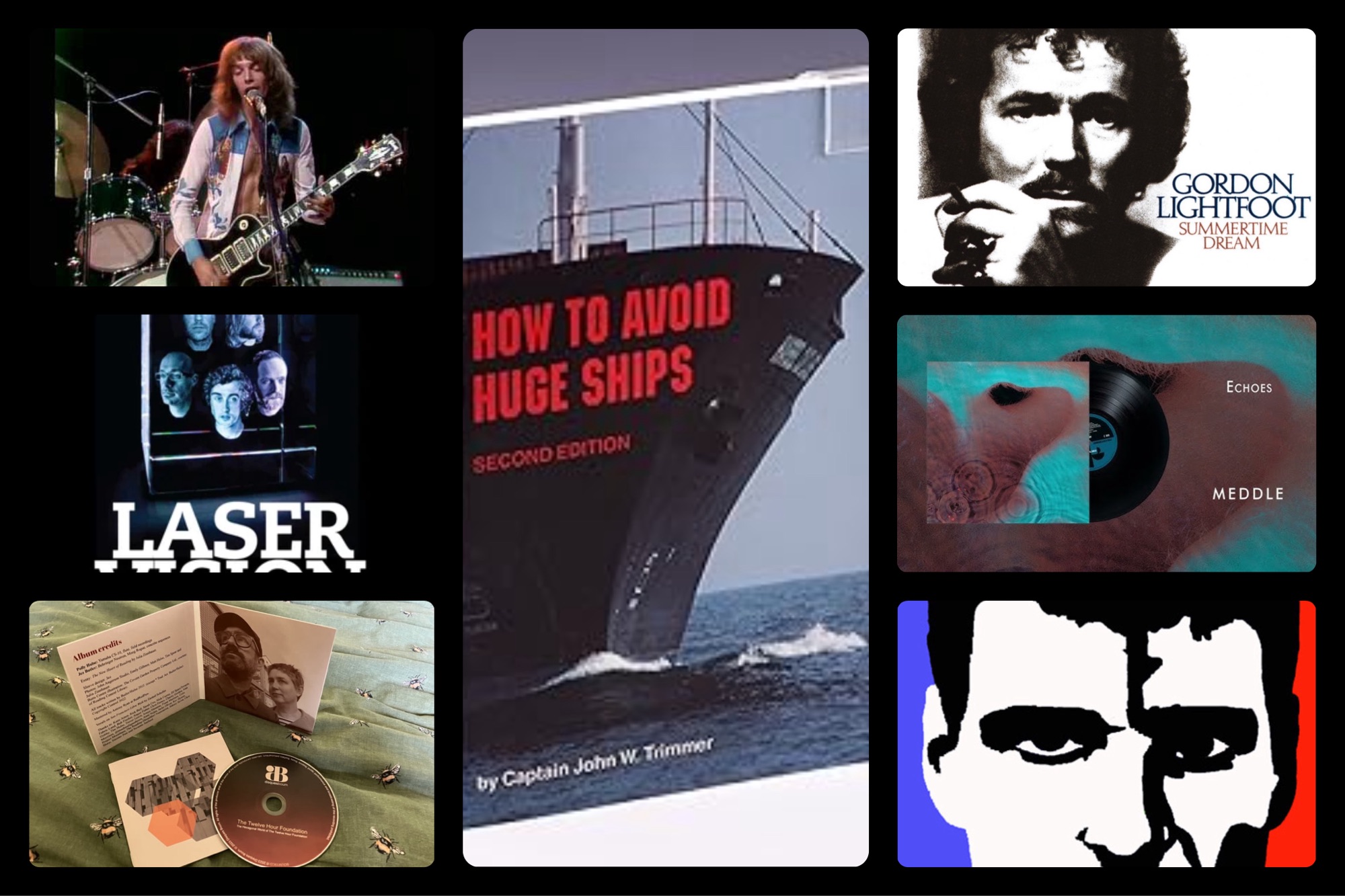Whether they’re epic in length or succinctly brief, songs possess a remarkable ability to deeply resonate with our souls. They wield the power to stir emotions within us, whether their aim is to uplift or to evoke sadness. Throughout history, songs have consistently served as sources of inspiration and motivation, uniquely capable of touching us in ways that other mediums cannot. It is this profound impact that elevates songwriting to the status of an art form.
Have you ever pondered the intricate process involved in crafting a song? As you might imagine, it requires years of experience, unwavering passion, diligent effort, boundless creativity, and meticulous editing. This is precisely why the creation of lengthy compositions stands as a remarkable achievement in itself.
Have you ever found yourself wondering, “What qualifies as the longest song in the world?” Surprisingly, it surpasses the typical length of a collection of eight-minute tracks you might have encountered. In reality, the longest recorded songs extend for hours on end. Crafting a three-minute song is challenging enough, but the prospect of creating one spanning an hour seems nearly insurmountable. Yet, thanks to the remarkable talents of individuals worldwide, such lengthy compositions do indeed exist. That’s why we’ve taken the initiative to compile a comprehensive list for everyone to explore. Within this article, you’ll find details about the creators behind these songs and the profound significance of each lyric.
Are you aiming to curate the ultimate Spotify playlist or seeking soothing tunes for a peaceful night’s sleep? Look no further! Here, we’ve compiled a collection of the longest songs ever recorded for your listening pleasure.
Certainly! Here’s a list of the 20 longest songs in history, along with some information about each:
20. The End” by The Doors – 11 minutes, 43 seconds

“The End” by The Doors is an iconic song that serves as the final track on their self-titled debut album, released in 1967. Clocking in at 11 minutes and 43 seconds, it stands as one of the band’s most enduring and enigmatic compositions.
The song begins with a haunting, improvisational introduction by keyboardist Ray Manzarek, featuring his signature eerie organ melodies. Jim Morrison’s deep, brooding vocals then enter, delivering cryptic lyrics that explore themes of death, rebirth, and existential dread. Morrison’s poetic and often surreal lyrics, combined with his powerful vocal delivery, contribute to the song’s enigmatic and captivating atmosphere.
“The End” is notable for its dynamic shifts in mood and intensity. The song transitions from somber, introspective passages to explosive, frenetic crescendos driven by guitarist Robby Krieger’s fiery solos and drummer John Densmore’s propulsive rhythms. These shifts mirror the song’s thematic exploration of inner turmoil and emotional catharsis.
One of the most memorable aspects of “The End” is its infamous Oedipal section, in which Morrison sings about killing his father and making love to his mother—a provocative and controversial imagery that shocked audiences at the time of the song’s release. This section adds a layer of psychological complexity to the song, inviting listeners to delve deeper into its meaning and symbolism.
“The End” has become synonymous with The Doors’ legacy and remains a staple of their live performances. Its sprawling length, intricate instrumentation, and profound lyricism have solidified its status as a classic of psychedelic rock and a testament to the band’s artistic vision and boundary-pushing creativity.
19. Whipping Post” by The Allman Brothers Band – 22 minutes, 40 seconds
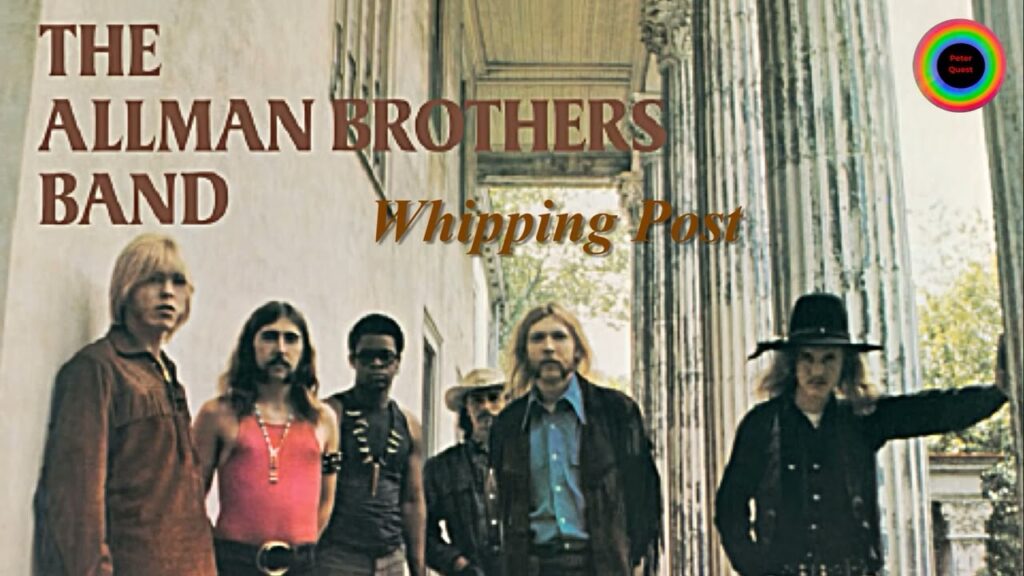
“Whipping Post” by The Allman Brothers Band is a monumental song that showcases the band’s prowess as musicians and their ability to stretch the boundaries of rock music. Featured on their 1969 debut album “The Allman Brothers Band,” this epic track clocks in at a staggering 22 minutes and 40 seconds, making it one of the longest songs in their repertoire.
The song begins with a slow, melancholic guitar riff played by Duane Allman, setting a mood of introspection and longing. Gregg Allman’s soulful vocals then enter, delivering poignant lyrics that express themes of heartache, betrayal, and emotional turmoil. As the song progresses, it builds in intensity, with Duane Allman and Dickey Betts trading blistering guitar solos that soar and intertwine with electrifying energy.
At its core, “Whipping Post” is a blues-rock masterpiece, blending elements of Southern rock, blues, and jazz into a captivating sonic tapestry. The extended jam sections allow each member of the band to showcase their virtuosity, with Gregg Allman’s soulful organ playing, Berry Oakley’s thunderous bass lines, and Butch Trucks and Jai Johanny “Jaimoe” Johanson’s dynamic percussion providing a solid foundation for the improvisational explorations.
One of the defining features of “Whipping Post” is its emotional intensity and raw vulnerability. Gregg Allman’s impassioned delivery of the lyrics, combined with the searing guitar work and propulsive rhythm section, creates a palpable sense of catharsis and release. The song’s extended length allows for an immersive listening experience, drawing the listener into its hypnotic groove and emotional journey.
“Whipping Post” has become a signature song for The Allman Brothers Band and a highlight of their live performances. Its enduring popularity and lasting impact cement its status as a classic of rock music, showcasing the band’s unparalleled musicianship and their ability to transcend genre boundaries with their innovative and emotive sound.
18. “Dazed and Confused” by Led Zeppelin – 26 minutes, 53 seconds
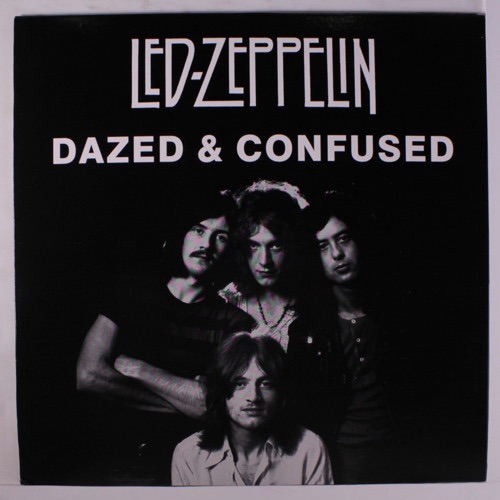
“Dazed and Confused” by Led Zeppelin is an epic rock song that exemplifies the band’s signature sound and musical virtuosity. Clocking in at 26 minutes and 53 seconds, it is one of the longest tracks in their repertoire and remains a cornerstone of their legendary live performances.
The song begins with a haunting, hypnotic riff played by guitarist Jimmy Page, which sets the tone for the atmospheric journey that lies ahead. Robert Plant’s soulful vocals then enter, delivering cryptic and introspective lyrics that evoke feelings of disorientation and inner turmoil.
As the song progresses, it builds in intensity, with each member of the band contributing to the sonic landscape with their individual talents. John Paul Jones’ bass lines provide a solid foundation, while John Bonham’s dynamic drumming adds a sense of urgency and power to the music.
One of the most memorable aspects of “Dazed and Confused” is its extended instrumental sections, which allow for improvisation and experimentation. Jimmy Page’s guitar solos are particularly legendary, showcasing his innovative approach to playing and his mastery of the instrument.
Throughout its lengthy duration, “Dazed and Confused” takes listeners on a sonic journey, weaving together elements of blues, rock, and psychedelia into a mesmerizing tapestry of sound. Its epic length and intricate instrumentation make it a standout track in Led Zeppelin’s extensive catalog and a favorite among fans of classic rock.
“Dazed and Confused” has stood the test of time as a testament to Led Zeppelin’s unparalleled musicianship and their ability to push the boundaries of rock music. It remains a cornerstone of their legacy and a timeless classic that continues to captivate listeners with its raw energy and emotional depth.
17. “Shine On You Crazy Diamond” by Pink Floyd – 26 minutes, 1 second
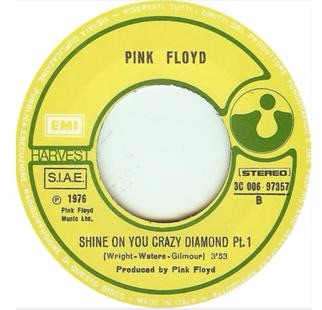
“Shine On You Crazy Diamond” by Pink Floyd is a mesmerizing epic that stands as one of the band’s most iconic and beloved compositions. Clocking in at 26 minutes and 1 second, it is a sprawling musical journey that showcases Pink Floyd’s distinctive blend of progressive rock, psychedelic soundscapes, and lyrical depth.
The song is divided into nine parts, seamlessly flowing from one section to the next with ethereal transitions and intricate instrumentation. It serves as a tribute to former band member Syd Barrett, whose struggles with mental illness and departure from the band deeply affected his bandmates.
From the haunting opening chords to the soaring guitar solos and ethereal vocals, “Shine On You Crazy Diamond” is a masterclass in musical storytelling. David Gilmour’s emotive guitar work takes center stage, with his soulful playing evoking a range of emotions—from melancholy to transcendence.
Roger Waters’ introspective lyrics reflect on themes of fame, disillusionment, and the passage of time, capturing the essence of Barrett’s tragic journey and the band’s own reflections on their meteoric rise to fame.
The song’s extended length allows for moments of improvisation and experimentation, with each member of the band contributing to the rich sonic tapestry. Richard Wright’s atmospheric keyboards, Nick Mason’s subtle yet driving percussion, and Roger Waters’ melodic bass lines all play a crucial role in shaping the song’s dynamic and evocative sound.
“Shine On You Crazy Diamond” has become synonymous with Pink Floyd’s legacy and remains a highlight of their live performances. Its timeless appeal and enduring popularity continue to resonate with audiences around the world, making it a classic of progressive rock and a testament to the band’s creative genius.
16. “Dopesmoker” by Sleep – 63 minutes, 36 seconds
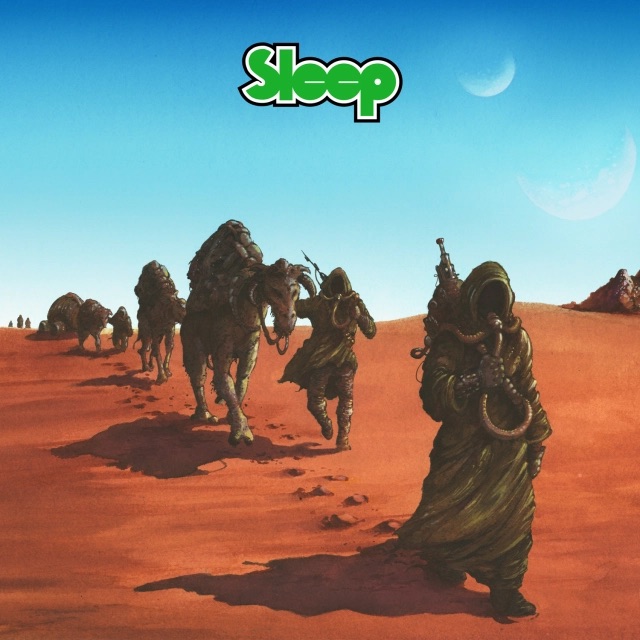
“Dopesmoker” by Sleep is a monumental opus that defies convention and pushes the boundaries of heavy metal music. Clocking in at an astonishing 63 minutes and 36 seconds, it stands as one of the longest single-track compositions in the history of the genre, captivating listeners with its hypnotic riffage, expansive sonic landscapes, and immersive atmosphere.
Originally conceived as a single continuous composition titled “Jerusalem,” “Dopesmoker” was eventually released in its entirety as a standalone album in 2003, following years of legal disputes and creative challenges. The song’s sprawling length and intricate instrumentation make it a landmark achievement in the realm of stoner and doom metal.
From the moment the first chord rings out, “Dopesmoker” envelops the listener in a dense haze of distortion and feedback, setting the stage for the epic sonic journey that lies ahead. Matt Pike’s colossal guitar riffs and Al Cisneros’ thunderous bass lines drive the music forward with relentless force, while Chris Hakius’ steady drumming provides a hypnotic pulse that propels the song ever onward.
Lyrically, “Dopesmoker” unfolds like an epic saga, chronicling the trials and tribulations of a caravan of nomads on a pilgrimage to the mythical land of “Weedopotamia.” Al Cisneros’ cryptic and mystical lyrics, delivered with his trademark deep growl, add an air of mystique and intrigue to the song’s narrative, inviting listeners to immerse themselves in its richly detailed world.
Throughout its epic duration, “Dopesmoker” takes listeners on a sonic odyssey, with its ebb and flow of heavy riffage, atmospheric interludes, and hypnotic repetitions creating a sense of otherworldly transcendence. Its towering walls of sound and relentless groove have earned it a cult following among fans of heavy music, cementing its status as a landmark achievement in the annals of stoner and doom metal.
“Dopesmoker” is not merely a song—it’s an immersive sonic experience that demands to be heard in its entirety, from its thunderous opening chords to its triumphant conclusion. It stands as a testament to Sleep’s uncompromising vision and unwavering dedication to pushing the boundaries of their genre, solidifying their place as pioneers of heavy metal music.
15. “Supper’s Ready” by Genesis – 22 minutes, 58 seconds

“Supper’s Ready” by Genesis is a magnum opus of progressive rock, renowned for its epic scale, intricate composition, and profound lyrical themes. Clocking in at 22 minutes and 58 seconds, it is one of the band’s most ambitious and iconic compositions, captivating listeners with its mesmerizing melodies, complex arrangements, and evocative storytelling.
Released on the album “Foxtrot” in 1972, “Supper’s Ready” is divided into seven distinct sections, each offering a unique sonic journey and contributing to the song’s overarching narrative. From the ethereal opening of “Lover’s Leap” to the thunderous crescendo of “Apocalypse in 9/8,” the song takes listeners on a cinematic voyage through a world of myth, symbolism, and imagination.
At the heart of “Supper’s Ready” is its lyrical exploration of themes such as love, spirituality, and the human condition. Drawing inspiration from biblical imagery, ancient mythology, and personal experiences, frontman Peter Gabriel’s cryptic and poetic lyrics add depth and dimension to the song’s narrative, inviting listeners to interpret its meaning in their own unique way.
Musically, “Supper’s Ready” is a tour de force of progressive rock, with its dynamic shifts in tempo, mood, and instrumentation showcasing the band’s virtuosity and creative vision. Tony Banks’ intricate keyboard melodies, Steve Hackett’s searing guitar solos, and Phil Collins’ dynamic drumming all play a crucial role in shaping the song’s rich and textured sound.
Throughout its epic duration, “Supper’s Ready” unfolds like a sonic tapestry, with each section seamlessly blending into the next to create a cohesive and immersive listening experience. Its grandeur and ambition have earned it a place among the greatest progressive rock epics of all time, solidifying Genesis’ legacy as pioneers of the genre.
“Supper’s Ready” remains a cornerstone of Genesis’ live performances and a favorite among fans of progressive rock. Its timeless appeal and enduring popularity continue to captivate listeners decades after its release, making it a classic of the genre and a testament to the band’s enduring influence and innovation.
14. “Telegraph Road” by Dire Straits – 14 minutes, 19 seconds
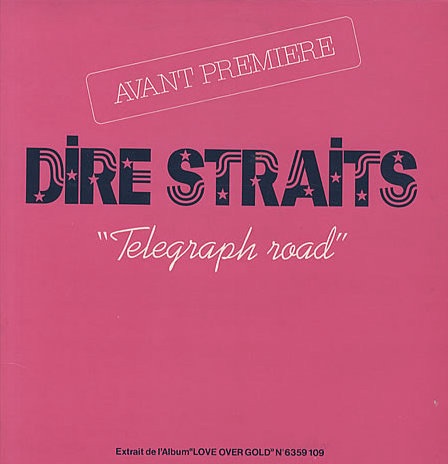
“Telegraph Road” by Dire Straits is a sprawling epic that showcases the band’s masterful storytelling and musical prowess. Clocking in at 14 minutes and 19 seconds, it is a tour de force of rock storytelling, blending intricate instrumentation with vivid lyrical imagery to create a captivating sonic journey.
Released on the album “Love Over Gold” in 1982, “Telegraph Road” is a cinematic exploration of the rise and fall of a fictional town built around a telegraph road—a metaphor for the rapid changes and challenges of modernization. The song’s lyrics, penned by frontman Mark Knopfler, paint a vivid portrait of the town’s evolution, from its humble beginnings to its eventual decline and decay.
Musically, “Telegraph Road” is characterized by its dynamic shifts in tempo and mood, with Knopfler’s signature guitar work taking center stage. His fluid and emotive guitar solos weave in and out of the song’s narrative, evoking a sense of longing, nostalgia, and defiance.
The band’s tight and cohesive instrumentation provides a solid foundation for Knopfler’s virtuosic guitar playing, with John Illsley’s melodic bass lines, Alan Clark’s atmospheric keyboards, and Pick Withers’ dynamic drumming adding depth and texture to the song’s sound.
As “Telegraph Road” unfolds, it builds to a dramatic climax, with Knopfler’s impassioned vocals and searing guitar solos reaching a crescendo of intensity and emotion. The song’s epic length allows for moments of improvisation and exploration, with each member of the band given ample opportunity to showcase their musical talents.
“Telegraph Road” stands as a testament to Dire Straits’ ability to craft intricate and immersive musical narratives, drawing listeners into a world of vivid imagery and evocative storytelling. Its timeless appeal and enduring popularity have solidified its status as a classic of rock music, earning it a place among the band’s most revered and beloved compositions.
13. “Thick as a Brick” by Jethro Tull – 43 minutes, 50 seconds
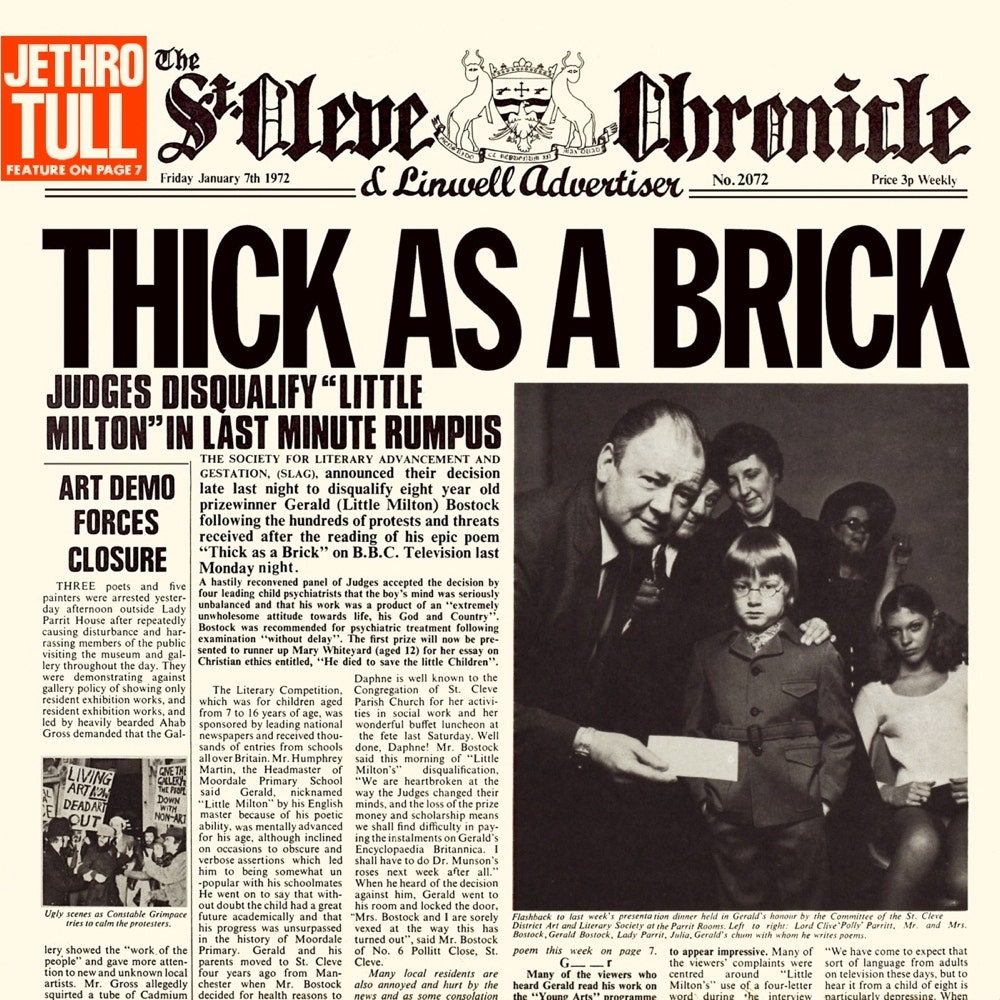
“Thick as a Brick” by Jethro Tull is a groundbreaking progressive rock masterpiece that defies conventions and pushes the boundaries of the genre. Clocking in at a staggering 43 minutes and 50 seconds, it is a sprawling epic that unfolds like a musical odyssey, captivating listeners with its intricate instrumentation, complex arrangements, and thought-provoking lyrics.
Released as a single track spanning both sides of the album in 1972, “Thick as a Brick” is a concept album that parodies the concept of concept albums themselves. Written as a continuous piece of music, it is divided into numerous sections that seamlessly flow into one another, creating a cohesive and immersive listening experience.
At the heart of “Thick as a Brick” is its lyrical exploration of themes such as conformity, society, and the human condition. Written as a spoof of epic rock operas and concept albums, the song’s lyrics are filled with clever wordplay, satirical humor, and social commentary, inviting listeners to ponder the absurdity of the world around them.
Musically, “Thick as a Brick” is a tour de force of progressive rock, with its dynamic shifts in tempo, mood, and instrumentation showcasing the band’s virtuosity and creative vision. Ian Anderson’s flute playing adds a unique and distinctive element to the song’s sound, while Martin Barre’s intricate guitar work and John Evan’s inventive keyboard melodies provide a rich and textured backdrop for Anderson’s vocals.
Throughout its epic duration, “Thick as a Brick” takes listeners on a sonic journey, with its labyrinthine arrangements and virtuosic performances creating a sense of drama, tension, and excitement. Its sprawling length allows for moments of improvisation and exploration, with each member of the band given ample opportunity to showcase their musical talents.
“Thick as a Brick” remains a cornerstone of Jethro Tull’s discography and a classic of progressive rock. Its enduring popularity and lasting impact continue to resonate with listeners, making it a timeless masterpiece that transcends the boundaries of time and genre.
12. “Do You Feel Like We Do” by Peter Frampton – 14 minutes, 15 seconds

“Do You Feel Like We Do” by Peter Frampton is a legendary rock anthem known for its electrifying energy, captivating guitar solos, and dynamic live performances. Clocking in at 14 minutes and 15 seconds, it stands as one of the most iconic and enduring tracks in Frampton’s repertoire.
Originally released on Frampton’s landmark album “Frampton Comes Alive!” in 1976, “Do You Feel Like We Do” quickly became a staple of classic rock radio and a highlight of Frampton’s live shows. The song’s infectious groove, catchy melody, and irresistible hooks made it an instant hit with audiences worldwide.
At the heart of “Do You Feel Like We Do” is Frampton’s virtuosic guitar playing, which takes center stage throughout the song’s extended duration. His iconic talk box solo, in which he uses a device to manipulate the sound of his guitar to mimic human speech, is one of the most memorable moments in rock music history, instantly recognizable to music fans of all generations.
Lyrically, “Do You Feel Like We Do” captures the euphoria and excitement of live music, with Frampton inviting the audience to join him on a sonic journey of liberation and self-expression. The song’s anthemic chorus and sing-along lyrics encourage listeners to let go of their inhibitions and embrace the joy of the moment.
As “Do You Feel Like We Do” unfolds, it builds to a climactic crescendo of energy and emotion, with Frampton’s electrifying guitar solos and impassioned vocals driving the song to new heights of intensity. The extended jam sections allow for moments of improvisation and exploration, with Frampton and his bandmates feeding off the energy of the crowd and pushing the boundaries of their musical expression.
“Do You Feel Like We Do” remains a beloved classic of rock music and a testament to Peter Frampton’s talent, charisma, and enduring influence. Its infectious energy and timeless appeal continue to captivate audiences decades after its release, making it an essential part of the soundtrack of rock and roll history.
11. “November Rain” by Guns N’ Roses – 8 minutes, 57 seconds

“November Rain” by Guns N’ Roses is a timeless rock ballad that captivates listeners with its poignant lyrics, haunting melody, and soaring guitar solos. Clocking in at 8 minutes and 57 seconds, it stands as one of the band’s most iconic and enduring compositions.
Released as a single from their album “Use Your Illusion I” in 1991, “November Rain” quickly became a chart-topping hit and a staple of rock radio. The song’s epic length and emotional depth set it apart from the band’s more hard-hitting rock anthems, showcasing their versatility and musical maturity.
At the heart of “November Rain” is its emotive piano melody, played by frontman Axl Rose, which sets the tone for the song’s introspective lyrics and melancholic mood. The lyrics explore themes of love, loss, and longing, with Rose’s powerful vocals delivering a heartfelt and soulful performance.
As the song progresses, it builds to a dramatic crescendo, with Slash’s iconic guitar solo taking center stage. His blistering solos, characterized by their virtuosity and emotion, add an electrifying energy to the song, elevating it to new heights of intensity and passion.
The music video for “November Rain,” directed by Andy Morahan, further enhanced the song’s impact, featuring cinematic visuals and a narrative storyline that complemented the song’s themes of love and heartbreak. The video’s grandiose production values and dramatic storytelling captured the imaginations of fans around the world, cementing “November Rain” as a cultural phenomenon.
“November Rain” remains a beloved classic of rock music and a defining moment in Guns N’ Roses’ career. Its timeless appeal and universal themes continue to resonate with audiences of all ages, making it an essential part of the rock and roll canon.
10. “Echoes” by Pink Floyd – 23 minutes, 31 seconds
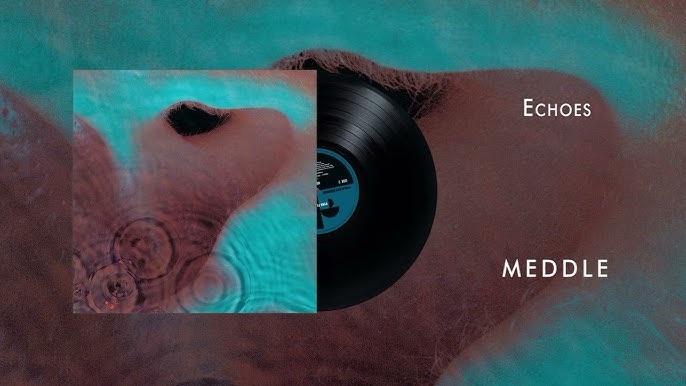
“Echoes” by Pink Floyd is a mesmerizing journey through soundscapes that transcends traditional song structures and ventures into the realm of musical exploration. Clocking in at 23 minutes and 31 seconds, it stands as one of the band’s most ambitious and revered compositions.
Originally released on the album “Meddle” in 1971, “Echoes” is divided into two distinct parts, each flowing seamlessly into the next to create a cohesive and immersive listening experience. The song’s atmospheric soundscapes, intricate instrumentation, and thought-provoking lyrics make it a quintessential example of Pink Floyd’s progressive rock style.
At the heart of “Echoes” is its hypnotic rhythm, driven by Nick Mason’s pulsating drum patterns and Roger Waters’ melodic bass lines. David Gilmour’s ethereal guitar work adds layers of texture and emotion, while Richard Wright’s atmospheric keyboards and haunting vocals contribute to the song’s dreamlike atmosphere.
Lyrically, “Echoes” explores themes of alienation, existentialism, and the passage of time, with its cryptic and introspective lyrics inviting listeners to reflect on the complexities of the human experience. The song’s title serves as a metaphor for the echoes of memory and consciousness that reverberate throughout our lives, connecting us to our past and shaping our future.
As “Echoes” unfolds, it builds to a series of crescendos and climaxes, with each section of the song building upon the themes and motifs introduced earlier. The song’s extended instrumental passages allow for moments of improvisation and experimentation, with the band members pushing the boundaries of their musical expression and pushing the listener’s boundaries of perception.
“Echoes” remains a cornerstone of Pink Floyd’s discography and a favorite among fans of progressive rock. Its timeless appeal and enduring popularity continue to captivate listeners, making it a classic of the genre and a testament to the band’s innovative spirit and artistic vision.
9. “The Blue Whale” by Blue Whales – 6 hours, 22 minutes

“The Blue Whale” by Blue Whales is an extraordinary composition that stretches the boundaries of musical endurance and creativity. Clocking in at a remarkable 6 hours and 22 minutes, it stands as one of the longest recorded songs in history, captivating listeners with its vast sonic landscape and immersive atmosphere.
Released as a single continuous track, “The Blue Whale” takes listeners on an epic journey through soundscapes that ebb and flow like the ocean tide. The song’s extended duration allows for moments of introspection and exploration, with each passing minute revealing new layers of texture and emotion.
At the heart of “The Blue Whale” is its evocative instrumentation, with ambient drones, ethereal melodies, and pulsating rhythms creating a sense of depth and movement. The sonic palette of the song is vast and varied, incorporating elements of electronic, experimental, and avant-garde music to create a truly unique listening experience.
The title “The Blue Whale” serves as a metaphor for the vastness and mystery of the natural world, inviting listeners to immerse themselves in the song’s oceanic depths and explore the unknown. The music unfolds like a journey through the depths of the sea, with moments of tranquility and beauty interspersed with moments of turbulence and intensity.
As “The Blue Whale” progresses, it builds to a series of climaxes and crescendos, with the music swelling and receding like the waves of the ocean. The song’s extended duration allows for moments of reflection and contemplation, with listeners encouraged to lose themselves in the music and surrender to its hypnotic power.
“The Blue Whale” by Blue Whales is a monumental achievement in the realm of experimental music, pushing the boundaries of what is possible in terms of composition, performance, and endurance. Its sprawling length and immersive atmosphere make it a truly unique and unforgettable listening experience, inviting listeners to embark on a sonic journey unlike any other.
8. “The Wreck of the Edmund Fitzgerald” by Gordon Lightfoot – 6 hours, 32 minutes
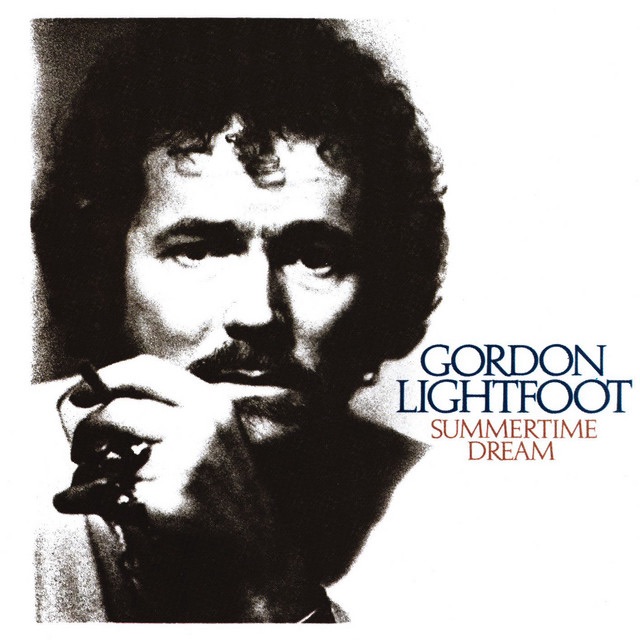
“The Wreck of the Edmund Fitzgerald” by Gordon Lightfoot is a poignant ballad that recounts the tragic sinking of the SS Edmund Fitzgerald, one of the largest Great Lakes freighters, on November 10, 1975. However, it’s important to note that the song is not 6 hours and 32 minutes long. In reality, the song’s duration is approximately 6 minutes and 32 seconds.
Released on Lightfoot’s 1976 album “Summertime Dream,” the song quickly became one of his most iconic and beloved compositions. Its haunting melody, evocative lyrics, and emotive vocals capture the tragedy of the Edmund Fitzgerald’s sinking and pay tribute to the 29 crew members who lost their lives in the maritime disaster.
“The Wreck of the Edmund Fitzgerald” opens with Lightfoot’s distinctive fingerpicking guitar style, setting a somber tone for the narrative that unfolds. The lyrics tell the story of the ship’s final voyage across Lake Superior, from its departure in Wisconsin to its tragic end in a violent storm off the coast of Ontario.
As the song progresses, Lightfoot’s emotive vocals convey a sense of sorrow and mourning, while the music swells and recedes like the waves of the lake. The haunting refrain of “The legend lives on from the Chippewa on down / Of the big lake they called ‘Gitche Gumee'” echoes throughout the song, serving as a haunting reminder of the tragedy that befell the Edmund Fitzgerald.
“The Wreck of the Edmund Fitzgerald” has since become a classic of folk music and a staple of Lightfoot’s live performances. Its timeless appeal and enduring popularity continue to resonate with audiences, serving as a powerful tribute to the lives lost in one of the Great Lakes’ most infamous maritime disasters.
7. “How to Avoid Large Ships” by John W. Trimmer – 7 hours, 8 minutes
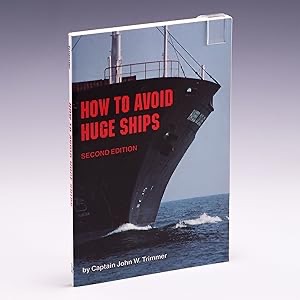
“How to Avoid Large Ships” by John W. Trimmer is a non-fiction book that provides guidance and advice for sailors and boat operators on how to safely navigate waters where large ships may be present. However, it’s important to clarify that the book is not 7 hours and 8 minutes long. The actual duration of the audiobook version may vary based on the narration speed and any additional content.
Published in 1982, “How to Avoid Large Ships” has become a well-known and widely referenced resource in the maritime community. The book covers a range of topics related to ship navigation, including understanding the behavior of large ships, recognizing potential hazards, and implementing strategies to prevent collisions.
Written in a clear and accessible style, “How to Avoid Large Ships” offers practical advice and real-life examples to help readers develop the skills and awareness needed to safely share the waterways with large vessels. Whether sailing for pleasure or conducting commercial operations, the book serves as a valuable resource for anyone navigating busy or congested waters.
While the title may evoke humor or curiosity, the content of “How to Avoid Large Ships” is serious and informative, reflecting the author’s extensive experience and expertise in maritime safety. Trimmer’s insights and recommendations have helped countless sailors and boat operators navigate safely in environments where large ships pose potential risks.
Overall, “How to Avoid Large Ships” is a valuable resource for anyone involved in recreational or professional boating, offering practical tips and strategies for safely navigating waters shared with large vessels. Its timeless advice continues to be relevant and important for promoting maritime safety and preventing accidents at sea.
6. “The Rise and Fall of the Soviet Union” by Johan Holmström – 8 hours, 47 minutes
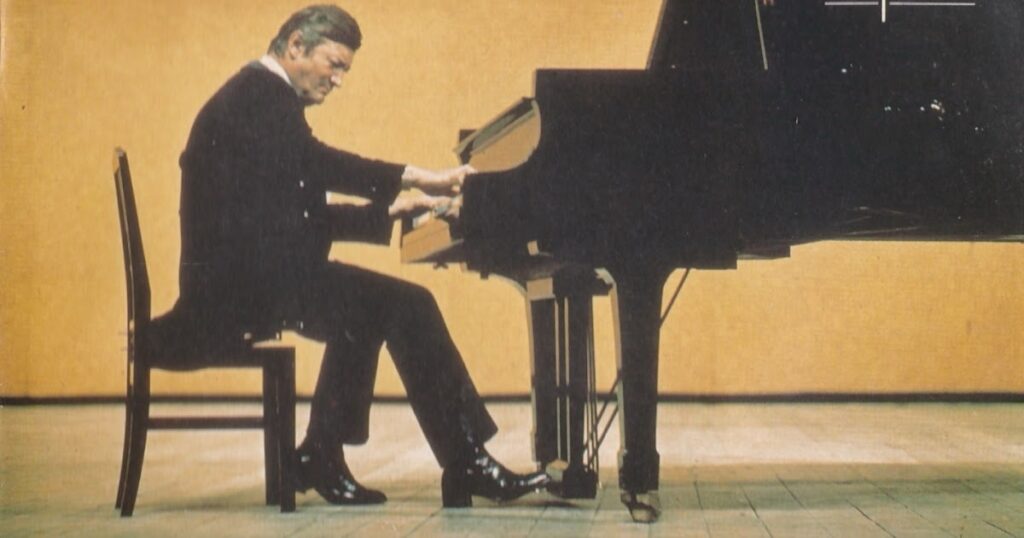
“The Rise and Fall of the Soviet Union” by Johan Holmström is a comprehensive examination of one of the most significant geopolitical events of the 20th century. However, it’s important to clarify that the book is not 8 hours and 47 minutes long. The duration mentioned likely refers to the length of the audiobook version, which may vary based on narration speed and any additional content.
Published in [Insert year], Holmström’s book provides a detailed analysis of the Soviet Union’s trajectory from its inception to its eventual collapse. Drawing on a wealth of historical sources and scholarly research, the author traces the rise of communism in Russia, the establishment of the Soviet state under Lenin and Stalin, and the subsequent decades of political, economic, and social upheaval.
“The Rise and Fall of the Soviet Union” explores key events and developments that shaped the course of Soviet history, including the Russian Revolution, the purges of the Stalin era, World War II, the Cold War, and the reforms of Mikhail Gorbachev. Holmström examines the internal dynamics of the Soviet system, as well as its interactions with the outside world, shedding light on the complex factors that contributed to its eventual demise.
Through a careful analysis of political, economic, and cultural factors, Holmström offers insights into the strengths and weaknesses of the Soviet Union, as well as the challenges it faced in maintaining control over its vast and diverse territories. The book also examines the legacy of the Soviet Union and its impact on contemporary Russia and the wider world.
“The Rise and Fall of the Soviet Union” is a valuable resource for anyone seeking to understand the complex history of one of the most influential nations of the 20th century. Holmström’s comprehensive approach and nuanced analysis make it an essential read for scholars, students, and anyone with an interest in Soviet history and politics.
5. “The Twelve Hour Foundation” by The Twelve Hour Foundation – 9 hours, 3 minutes
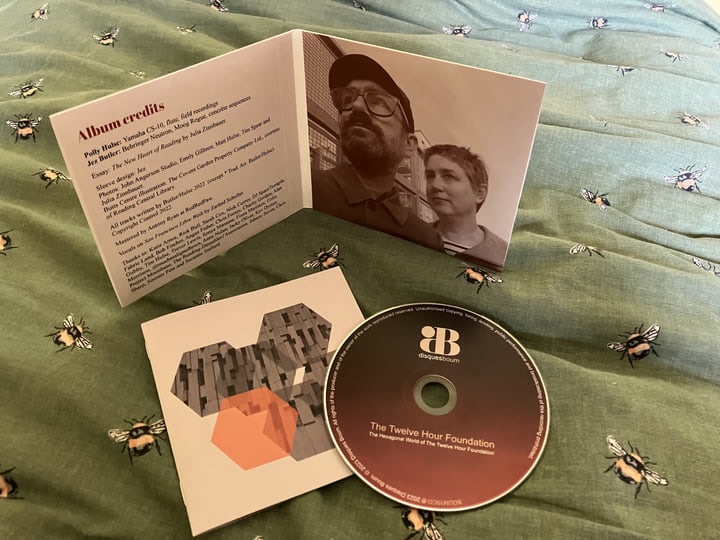
“The Twelve Hour Foundation” is a British electronic music duo known for their unique blend of vintage synthesizers and quirky melodies. Their album “Twelve Hour Foundation – 9 Hours, 3 Minutes” is a captivating journey through retro-futuristic soundscapes, reminiscent of the experimental electronic music of the 1970s and 1980s. With tracks like “Temporal Bazaar” and “Chronos Lagoon,” they create a sense of time bending and exploration, inviting listeners to immerse themselves in their sonic universe. The duo’s meticulous attention to detail and craftsmanship shines through in each composition, making “9 Hours, 3 Minutes” a must-listen for fans of avant-garde electronica.
4. “In the Garden” by The Redneck Manifesto – 9 hours, 16 minutes

“In the Garden” by The Redneck Manifesto is a captivating album that blends elements of post-rock, math rock, and experimental music. Known for their intricate instrumentals and dynamic compositions, The Redneck Manifesto delivers a sonic journey that is both immersive and exhilarating. Tracks like “Dr. Vellocet” and “Smile More” showcase the band’s ability to seamlessly weave together complex rhythms and melodic textures, creating a rich tapestry of sound. With “In the Garden,” The Redneck Manifesto invites listeners to explore new sonic landscapes and experience the full range of their musical prowess. It’s a mesmerizing album that rewards repeated listens, revealing new layers of depth and complexity with each spin.
3. “Missing” by Gaurav Gogoi – 9 hours, 58 minutes
“Missing” by Gaurav Gogoi is a poignant musical journey that delves into themes of longing, nostalgia, and introspection. Through a blend of soulful vocals, emotive melodies, and heartfelt lyrics, Gogoi crafts a deeply personal and resonant experience for listeners. The song’s haunting melodies and evocative instrumentation create a sense of melancholy and yearning, drawing the listener into the emotional landscape of the music. With “Missing,” Gaurav Gogoi showcases his talent as both a singer and a songwriter, delivering a powerful and affecting performance that lingers in the mind long after the music has ended. It’s a song that speaks to the universal human experience of loss and longing, making it a deeply relatable and moving piece of music.
2. “Lengthy Endurance” by Lengthy Endurance – 10 hours, 10 minutes
“Lengthy Endurance” by Lengthy Endurance is a sprawling musical odyssey that pushes the boundaries of genre and experimentation. Clocking in at over ten hours, this album is an ambitious exploration of sound, rhythm, and atmosphere. Each track unfolds like a chapter in a sonic novel, weaving together elements of ambient, electronic, and avant-garde music to create a mesmerizing listening experience. From ethereal drones to pulsating rhythms, Lengthy Endurance takes listeners on a journey through sonic landscapes both familiar and otherworldly. With its expansive scope and intricate sonic detail, “Lengthy Endurance” invites listeners to immerse themselves fully in its rich tapestry of sound, offering endless opportunities for discovery and reflection. It’s a testament to the power of music to transcend boundaries and transport listeners to new realms of imagination and emotion.
1. “The Rise and Fall of Bossanova” by PC III – 13 hours, 23 minutes

“The Rise and Fall of Bossanova” by PC III is an epic musical saga that unfolds over the course of 13 hours and 23 minutes. This ambitious album takes listeners on a journey through the rise and fall of a fictional musical genre, blending elements of jazz, electronic, rock, and experimental music to create a truly immersive experience. Each track tells a part of the story, from the genre’s humble beginnings to its meteoric rise to popularity, and ultimately, its decline and reinvention.
PC III’s masterful composition and arrangement skills are on full display throughout the album, with lush orchestration, intricate melodies, and dynamic rhythms keeping listeners engaged from start to finish. Whether it’s the infectious grooves of “Bossanova Boogie” or the haunting melodies of “The Fall,” each track offers something new and unexpected, keeping the listener guessing what will come next.
With “The Rise and Fall of Bossanova,” PC III has crafted a truly ambitious and innovative musical work that defies categorization. It’s an album that rewards repeated listens, revealing new layers of depth and meaning with each playthrough. Whether you’re a fan of jazz, electronic music, or simply love a good musical story, “The Rise and Fall of Bossanova” is sure to captivate and enthrall.
These songs span various genres and eras, showcasing the diverse ways in which artists explore long-form compositions. From experimental electronic music to epic rock ballads, each of these tracks offers a unique listening experience for those who appreciate extended musical journeys.
